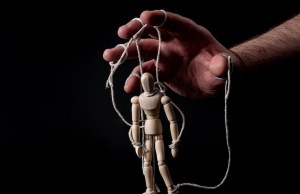Emotional vulnerability is an important part of a successful relationship. For some, emotional closeness and vulnerability come naturally, but for others, communicating emotions and forming close attachments feel very uncomfortable. Others may feel the need to avoid them altogether.
If you notice that you shy away from emotional intimacy, forming connections with others, and avoid close relationships to the point of acting self-destructively, this may be a sign that you have a dismissive-avoidant attachment style.
Attachment styles are patterns that start in early childhood, influenced by the type of care received from parents or guardians. An attachment style’s influence is often kept in the subconscious, which means that those with dismissive-avoidant attachment might not know why they struggle in relationships and pull away from intimacy. However, there are ways to overcome it.

What Is Dismissive-Avoidant Attachment?
Dismissive-avoidant attachment is a type of attachment style—a subtype of avoidant attachment—that is characterized by avoiding vulnerability, closeness, and intimate attachment to others. A dismissive-avoidant person may avoid relationships and crave independence.
Attachment styles are influenced by the bond or connection you formed with a primary caregiver during childhood. Depending on the type of bonds you experienced, your response to attachment or closeness with those around you may differ.
There are four types of attachment styles—only one is considered healthy and secure, while the other three are seen as “insecure,” or unhealthy, styles of attachment.
If your caregiver was able to successfully interpret your nonverbal emotional cues and give you consistent, loving care, then they likely made you feel heard and safe, causing you to form a secure, or healthy, attachment style.
However, inconsistent or startling responses to those needs often lead to insecure attachment styles, such as dismissive-avoidant, ambivalent, or disorganized attachment.
- Secure attachment: People with secure attachments are okay with being alone, but also thrive in relationships. Vulnerability and closeness do not alarm them, and neither do boundaries and separation. These qualities allow people to seek help when needed and take responsibility for actions and emotions. This is seen as a healthy attachment style.
- Disorganized/disoriented attachment: Also known as fearful-avoidant attachment, people with this attachment style have difficulty soothing their own emotions and can be prone to explosive outbursts. Due to extreme inconsistency in care or childhood trauma, they may feel unworthy of love and fear getting hurt, despite craving intimacy and connection.
- Ambivalent attachment: This style, also known as anxious or anxious-preoccupied attachment, is characterized by an intense need for love and attention from friends and partners. People with this attachment style may come off as “needy,”as they seek reassurance and security in their relationships. Anything viewed as a threat to the relationship causes a strong reaction, sometimes even spurring them to manipulate their partner.
- Dismissive-avoidant attachment: Sometimes also referred to as avoidant attachment, this style is characterized by extreme independence and feeling most comfortable alone. Avoidant people are uncomfortable with intimacy and vulnerability and often keep people at arm’s length. They are also very wary of feeling controlled—they may create distance and try to maintain independence by keeping secrets or invalidating their partner’s concerns about the relationship by calling them “clingy” or ending the relationship entirely.
What Causes Dismissive-Avoidant Attachment?
Dismissive-avoidant attachment is caused by separation or withdrawal from a primary caregiver. They may have had a mental health condition like depression, or perhaps had health issues when you were a baby, causing them to be less present and unable to consistently meet your care needs. You also may have experienced neglect or abuse, either physically or emotionally. Even numerous moves from environment to environment can cause dismissive-avoidant attachment.
In short, dismissive-avoidant people learn as children that support and care are not consistent when they come from others. Because of this, the only safe person they felt they could depend on for consistent care was themselves, causing them to be wary of connection as an adult.
What Are the Characteristics of a Dismissive-Avoidant Attachment Style?
The most prominent characteristic of dismissive-avoidant attachment is extreme self-sufficiency. People with a dismissive-avoidant attachment style do not want to rely on anyone, and in turn, do not want anyone relying on them. They value their freedom highly, believing that they function at their best by themselves. They don’t seek support or reassurance, so they may seem very confident.
However, this need for independence comes from a deep-seated inner fragility. Dismissive avoidant people can be fearful of rejection, so they believe that it’s easier to protect themselves from hurt if no one can get close enough to reject them.
Dismissive-avoidant attachment can also make someone feel discomfort when others get close, causing the avoidant person to withdraw and claim they feel “trapped” or “controlled.” This can lead to ignoring attempts to get in contact, keeping secrets, or making plans without their partner in order to create emotional distance.
Despite how they act in relationships, dismissive-avoidant people can be good friends and fun to be around. They tend to be social and outgoing, and can also have large friend groups. These friend groups are likely full of acquaintances or casual friends—impermanent people with little close personal attachment.
Hello, we're here to help you
We provide award-winning mental health services nationwide, with flexible scheduling & insurance coverage. Start your journey this week.
What Is the Difference Between Dismissive-Avoidant Attachment and Narcissistic Personality Disorder?
Narcissistic personality disorder (NPD) and a dismissive-avoidant attachment style are two separate diagnoses, and though their traits may seem similar, there are some fundamental differences.
First, while both may cause people to come off as confident, narcissistic people and those with NPD love to receive praise. Those with a dismissive-avoidant attachment style may feel uncomfortable with praise, since they might perceive it as an attempt to bond or express closeness.
Dismissive-avoidant people are also more likely to be empathetic. Though they don’t desire connection, they still value the feelings of others and will likely find ways to avoid causing hurt or harm. They might go so far as to seek help and figure out why they act the way they do.
However, narcissistic people and those with NPD rarely take ownership of their abusive behavior or mistakes, often blaming the issues on someone else, and likely won’t seek to change in any way.
The dismissive-avoidant attachment style is often compared to avoidant personality disorder as well, though they are also quite different. Those with avoidant personality disorder are more afraid of socialization in general, whereas most people with dismissive-avoidant attachment have no problem with interacting with others—it is emotional closeness and intimacy they avoid.
Dismissive-Avoidant Attachment in Relationships
Despite their aversion to intimacy, dismissive-avoidant people can still find themselves in relationships. However, there are many patterns that can cause disruption within the relationship if they are not changed or dealt with.
As people get closer to them, dismissive-avoidant people can start to seem more emotionally distant. Their discomfort with emotional intimacy becomes more clear, and they may start looking for a way out.
Their discomfort with opening up can leave their partner feeling alone and ignored. However, if this subject is broached, it can cause the dismissive-avoidant person to feel trapped and called-out, sometimes leading them to find reasons to end things. They might start acting rudely or trying to find flaws in their partner so they have an excuse to break up with them.
Dismissive-avoidant individuals believe they don’t need emotional connection and use the above behavior as a defense mechanism. However, the isolation it causes can affect their overall happiness in the long term.
How Do Dismissive-Avoidant People Show Love?
Dismissive-avoidant people may not show love very often, since it might signal to their partner that they desire a closer bond, but they might express it in indirect ways. It can be tough to recognize, since there’s a constant barrier guarding their emotions and keeping things from getting too deep. Instead of showing their love through words or touch, they might start to spend more time around you.
What Are Triggers for Those With a Dismissive-Avoidant Attachment Style?
Any situation that makes you feel out of control can feel extremely triggering if you have dismissive-avoidant attachment. Conflict is often very uncomfortable, especially if you feel criticized or if the circumstance feels emotionally volatile.
If you feel like someone has become dependent on you, you might start feeling controlled, which is a big trigger for the dismissive-avoidant style. Others’ expectations for your relationship with them, especially in regard to vulnerability, can make you feel very uncomfortable, causing you to look for ways to distance yourself.
Insistence on talking about emotions can put too much pressure on dismissive-avoidant people. Instead of this, it can be best to spend time simply asking each other questions. This way, the expectation of vulnerability isn’t so prominent, which helps to create a safe space.
How to Foster a Healthier Attachment Style
If you believe you might have a dismissive-avoidant or another insecure attachment style, consider talking to a mental health professional. They can help you examine your behaviors and patterns, work with you to identify your insecurities, and give you tools to help you develop a more secure attachment style.
However, if you don’t have access to adequate mental health services, there are other ways for you to develop a more secure attachment style. Working on aspects of yourself like your communication skills and making friends with people who already have secure attachment styles will open the door for closer connections and help show you what healthy and secure relationships look like. Increasing your emotional intelligence by expressing your emotions and needs and listening to those close to you when they do the same is another way to better your relationships with others.
Everyone deserves to experience the joy meaningful connection and healthy, intimate relationships can bring. Learning to let down some of your defenses and committing to trying new modes of connection are excellent ways to move into a more secure attachment style.













